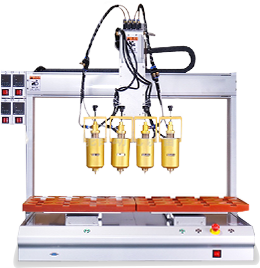
 +86-15993995054
+86-15993995054

 +86-15993995054
+86-15993995054


Children's toy banks are a unique and integral part of a child's play and learning environment. These charming items, often shaped in endearing forms like animals, cartoon characters, or familiar objects, have a multifaceted role. They serve as an early introduction to the concept of money management, a source of creative inspiration, and a delightful addition to a child's playroom decor. Over time, children's toy banks have evolved in design and functionality, adapting to the changing needs and interests of young minds. This exploration will delve into the various aspects of children's toy banks, including their historical development, types, educational significance, and emotional impact.
A Historical Perspective on Children's Toy Banks
The origin of children's toy banks can be traced back to the concept of money - saving containers, which has ancient roots. In medieval Europe, people used jars made from a type of clay called "pygg" to store their extra coins. As language evolved, the term "pygg" became associated with money - saving receptacles. By the 18th century, potters began shaping these containers in the form of pigs, as pigs were symbols of prosperity and abundance in many cultures. This is how the classic pig - shaped bank, which is still popular today, emerged.
In the United States, the 20th century witnessed a significant increase in the popularity of children's toy banks. Mass - production techniques made these banks more affordable and accessible to a wider audience. Initially, they were primarily functional, with a focus on the basic purpose of storing coins. However, as consumer demand grew, manufacturers started to incorporate more creativity into their designs. They began to shape toy banks into various animals, not just pigs, and later, into popular cartoon and movie characters, making them more appealing to children.
Types of Children's Toy Banks
Animal - Shaped Toy Banks
Animal - shaped toy banks are among the most popular types. The classic pig - shaped bank, with its stout body, curly tail, and coin - slot on the back or top, remains an iconic choice. Pig - shaped banks can be made from a variety of materials. Ceramic and porcelain models often feature hand - painted details, such as rosy cheeks and bright eyes, giving them an elegant and durable finish. Plastic pig - shaped banks, on the other hand, are more lightweight, affordable, and child - friendly. They come in a wide range of colors and may have additional features like a removable stopper at the bottom for easy access to the saved money.
Beyond pigs, there are numerous other animal - shaped toy banks. Elephant - shaped banks, with their long trunks and large ears, are not only cute but also symbolize strength and good luck in many cultures. Dog - shaped banks, designed to resemble different breeds like Dalmatians or Golden Retrievers, appeal to children who love dogs. Bird - shaped banks, such as owls or penguins, add a touch of whimsy. These animal - shaped banks can be made from materials like wood, metal (for more sturdy designs), or soft materials like plush fabric for a huggable option.
Character - Themed Toy Banks
Character - themed toy banks have seen a surge in popularity in recent years. These banks are shaped like beloved characters from movies, TV shows, cartoons, or books. Disney - themed toy banks are particularly well - known. Models shaped like Mickey Mouse, Minnie Mouse, Elsa from "Frozen," or characters from the "Star Wars" franchise are highly sought - after by children. These character - themed banks not only serve as a place to save money but also as collectibles. The detailed designs, which often replicate the characters' costumes, accessories, and distinct features, make them attractive to both children and collectors.
Superhero - themed toy banks are also a hit. Banks shaped like Superman, Batman, or Wonder Woman inspire children with their heroic imagery. These banks can be made from plastic, resin, or even 3D - printed materials, depending on the level of detail and durability desired. The character - themed toy banks are not only functional but also act as a form of self - expression for children, allowing them to display their favorite characters in their playrooms.
Educational and Interactive Toy Banks
In the modern era, educational and interactive toy banks have emerged to provide a more engaging learning experience for children. Some of these banks are equipped with LCD screens that display the amount of money saved. They may also feature sound effects, such as a cheerful "cha - ching" when a coin is inserted or encouraging messages as the savings grow. These features make the process of saving money more exciting and rewarding for children.
Interactive toy banks can be connected to mobile apps. Parents can use these apps to track their child's savings progress, set savings goals, and even assign virtual rewards. Some banks use sensors to detect the type of coin inserted and calculate the total value automatically. For example, a bank might be able to tell the difference between a penny, a nickel, a dime, and a quarter, and display the updated total on its screen. These high - tech toy banks not only make saving money more fun but also offer a more hands - on and data - driven approach to teaching children about finance.
DIY and Customizable Toy Banks
DIY and customizable toy banks offer children a chance to express their creativity. These banks often come in a plain or basic form, such as a simple plastic or wooden box. Children can then decorate them using paints, stickers, markers, or other craft materials. This allows children to personalize their toy banks according to their unique tastes and interests. For example, a child might paint their bank in their favorite colors, add stickers of their favorite animals or characters, or draw their own designs on it.
Customizing a toy bank can be a fun family activity. Parents and children can work together to create a one - of - a - kind money - saving container. This not only encourages creativity but also strengthens family bonds. The customized toy bank becomes a special item that reflects the child's individuality and is often cherished more than a pre - made, mass - produced bank.
The Educational Significance of Children's Toy Banks
Introduction to the Concept of Money
For young children, a toy bank serves as their first tangible introduction to the concept of money. When a child receives pocket money, perhaps for the first time, or a small coin as a gift, the act of dropping it into the toy bank is a simple yet powerful way to understand that money can be set aside for later use. This hands - on experience helps children grasp the idea that money is not just for immediate spending but can be saved for a future purpose.
Teaching the Value of Saving
Toy banks play a crucial role in teaching children the value of saving. As the bank gradually fills up with coins, children can see and feel the results of their saving efforts. Parents can use this opportunity to explain to their children that saving money requires discipline and patience. They can relate the amount of money in the toy bank to the things the child can buy in the future, such as a new toy, a book, or a special treat. This helps children understand the concept of delayed gratification, which is an important life skill.
Basic Math Skills Development
Handling coins and using a toy bank can also aid in the development of basic math skills. Children learn to recognize different coins and their values. They can practice counting coins as they insert them into the bank and calculate the total amount saved. For example, if a child has a few pennies, a nickel, and a dime, they can learn to add these values together to find out how much money they have saved. Some interactive toy banks even have built - in features that reinforce math skills, such as displaying the total amount in numerical form and also as an addition equation (e.g., 3 pennies + 1 nickel = 8 cents).
Goal - Setting and Responsibility
Toy banks can be used to teach children about goal - setting. Parents can encourage their children to decide on something they want to buy and then use the toy bank to save up the necessary funds. This gives children a sense of purpose and responsibility. They learn to set a goal, work towards it by saving money regularly, and experience the satisfaction of achieving their goal when they finally have enough money in the bank to make the purchase.
The Emotional and Creative Impact of Children's Toy Banks
Sentimental Value
Children's toy banks often hold deep sentimental value. They may be given as gifts on special occasions such as birthdays, holidays, or as a reward for good behavior. Over time, these toy banks become cherished keepsakes that evoke memories of childhood. Some families even have a tradition of passing down a special toy bank from one generation to the next. This not only preserves a family heirloom but also continues the tradition of teaching children about money management and the value of saving.
Encouraging Creativity
Toy banks, especially DIY and customizable ones, can be a source of creative inspiration for children. When children decorate their toy banks, they are using their imagination and artistic skills. They can experiment with different colors, patterns, and materials to create a unique design. Even with pre - made toy banks, children may create stories or games around them. For example, they might pretend that their animal - shaped toy bank is a friendly creature that helps them save money for adventures. This creative play enriches a child's imagination and makes the experience of using the toy bank more enjoyable.
The Role of Children's Toy Banks in Modern Society
In today's digital age, where financial transactions are increasingly conducted electronically, children's toy banks still hold significant value. They provide a tangible and hands - on experience that helps children develop a fundamental understanding of money and finance. The physical act of handling coins, inserting them into the bank, and watching the savings grow offers a sensory and visual experience that is difficult to replicate in the digital realm.
Moreover, toy banks can serve as a bridge between traditional financial concepts and modern digital finance. As children grow older and start to use digital payment methods, the lessons learned from using a toy bank, such as saving, goal - setting, and understanding the value of money, can be applied to their digital financial management.
In conclusion, children's toy banks are much more than simple containers for coins. They are educational tools, sources of creativity, and bearers of emotional value. Their diverse range of types, from classic animal - shaped banks to high - tech interactive models, caters to the different interests and developmental needs of children. Whether used to teach a child the basics of money management or as a fun and decorative addition to a playroom, these toy banks play a vital role in a child's growth and development, leaving a lasting impression that can influence their financial habits and creativity well into adulthood.